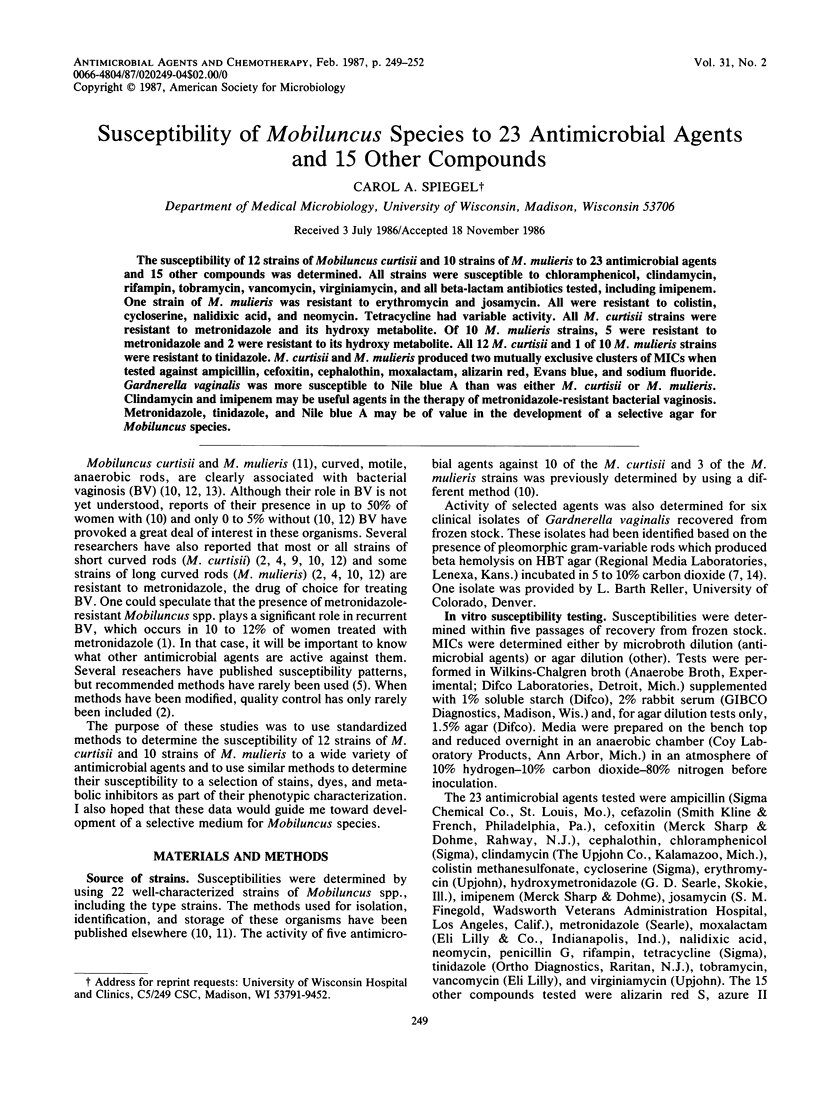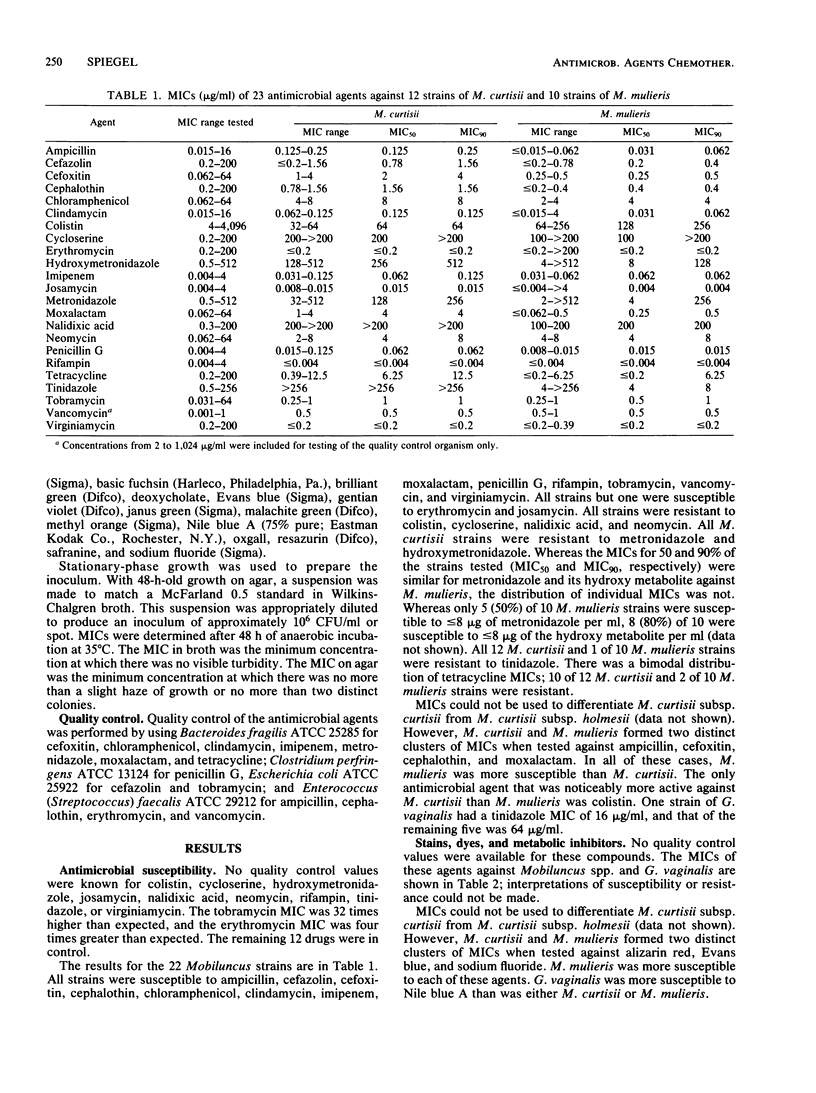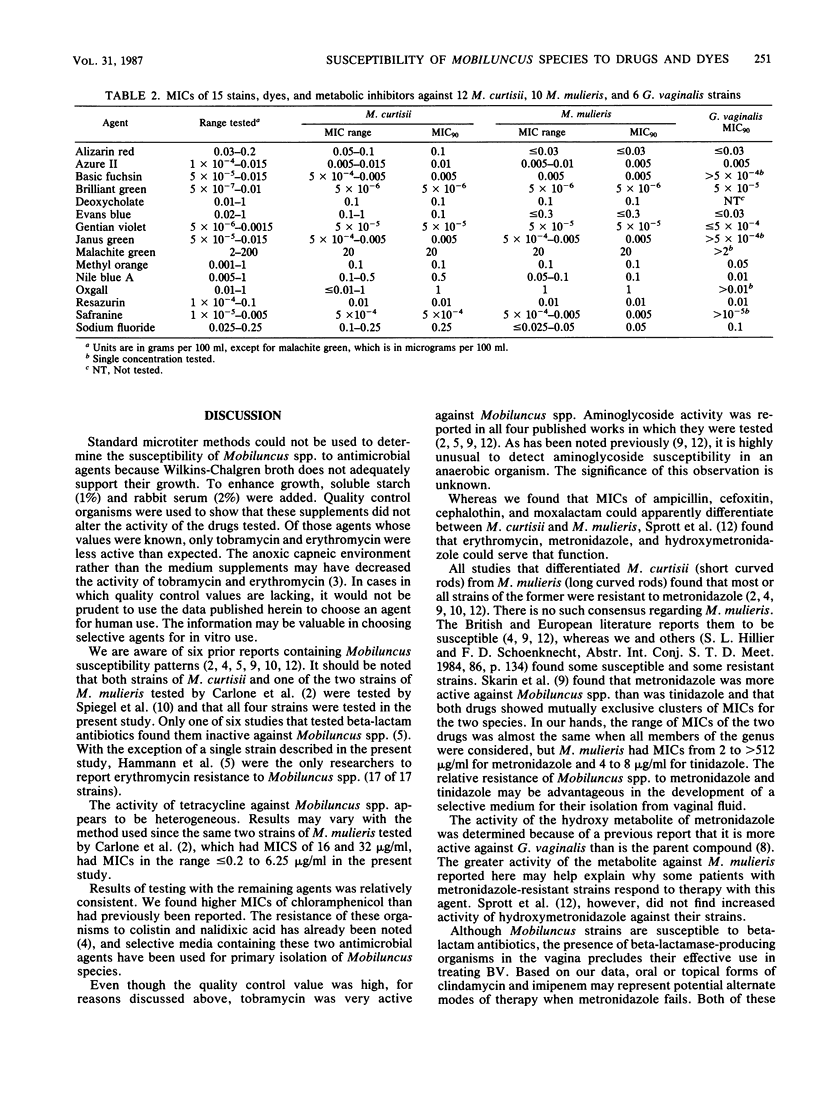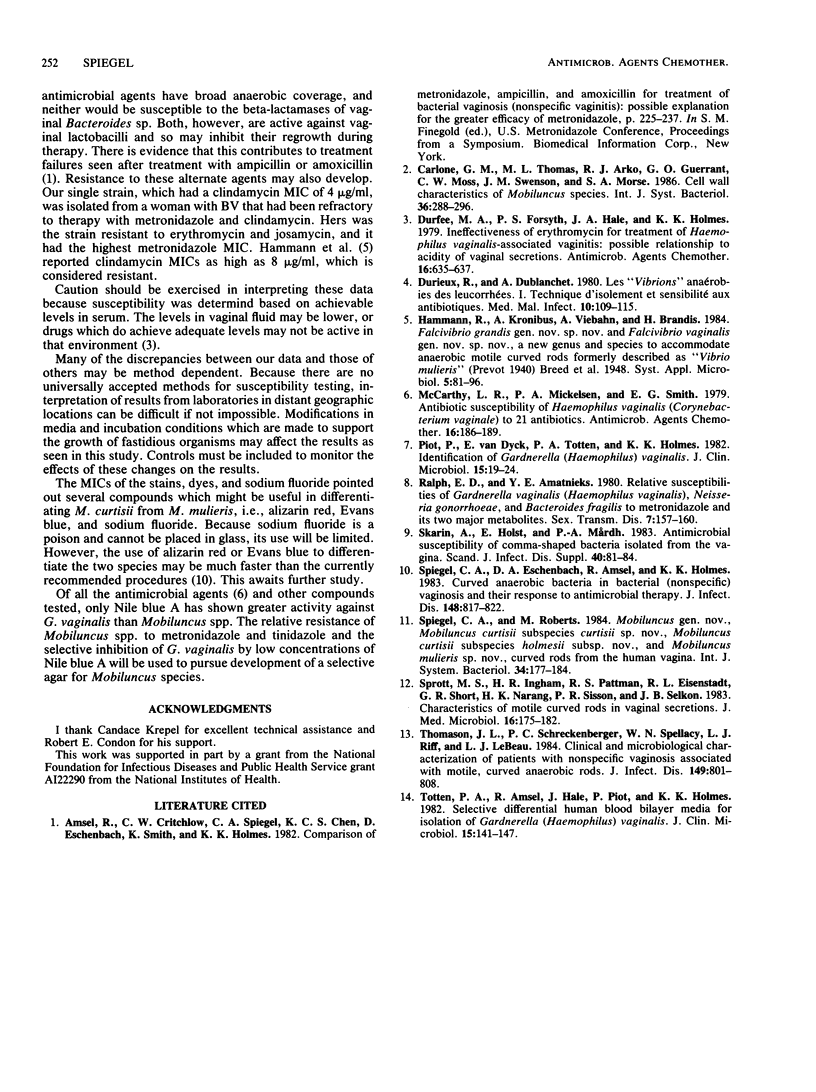Abstract
The susceptibility of 12 strains of Mobiluncus curtisii and 10 strains of M. mulieris to 23 antimicrobial agents and 15 other compounds was determined. All strains were susceptible to chloramphenicol, clindamycin, rifampin, tobramycin, vancomycin, virginiamycin, and all beta-lactam antibiotics tested, including imipenem. One strain of M. mulieris was resistant to erythromycin and josamycin. All were resistant to colistin, cycloserine, nalidixic acid, and neomycin. Tetracycline had variable activity. All M. curtisii strains were resistant to metronidazole and its hydroxy metabolite. Of 10 M. mulieris strains, 5 were resistant to metronidazole and 2 were resistant to its hydroxy metabolite. All 12 M. curtisii and 1 of 10 M. mulieris strains were resistant to tinidazole. M. curtisii and M. mulieris produced two mutually exclusive clusters of MICs when tested against ampicillin, cefoxitin, cephalothin, moxalactam, alizarin red, Evans blue, and sodium fluoride. Gardnerella vaginalis was more susceptible to Nile blue A than was either M. curtisii or M. mulieris. Clindamycin and imipenem may be useful agents in the therapy of metronidazole-resistant bacterial vaginosis. Metronidazole, tinidazole, and Nile blue A may be of value in the development of a selective agar for Mobiluncus species.
Full text
PDF



Selected References
These references are in PubMed. This may not be the complete list of references from this article.
- Durfee M. A., Forsyth P. S., Hale J. A., Holmes K. K. Ineffectiveness of erythromycin for treatment of Haemophilus vaginalis-associated vaginitis: possible relationship to acidity of vaginal secretions. Antimicrob Agents Chemother. 1979 Nov;16(5):635–637. doi: 10.1128/aac.16.5.635. [DOI] [PMC free article] [PubMed] [Google Scholar]
- McCarthy L. R., Mickelsen P. A., Smith E. G. Antibiotic susceptibility of Haemophilus vaginalis (Corynebacterium vaginale) to 21 antibiotics. Antimicrob Agents Chemother. 1979 Aug;16(2):186–189. doi: 10.1128/aac.16.2.186. [DOI] [PMC free article] [PubMed] [Google Scholar]
- Piot P., Van Dyck E., Totten P. A., Holmes K. K. Identification of Gardnerella (Haemophilus) vaginalis. J Clin Microbiol. 1982 Jan;15(1):19–24. doi: 10.1128/jcm.15.1.19-24.1982. [DOI] [PMC free article] [PubMed] [Google Scholar]
- Ralph E. D., Amatnieks Y. E. Relative susceptibilities of Gardnerella vaginalis (Haemophilus vaginalis), Neisseria gonorrhoeae, and Bacteroides fragilis to Metronidazole and its two major metabolites. Sex Transm Dis. 1980 Oct-Dec;7(4):157–160. doi: 10.1097/00007435-198010000-00001. [DOI] [PubMed] [Google Scholar]
- Skarin A., Holst E., Mårdh P. A. Antimicrobial susceptibility of comma-shaped bacteria isolated from the vagina. Scand J Infect Dis Suppl. 1983;40:81–84. [PubMed] [Google Scholar]
- Spiegel C. A., Eschenbach D. A., Amsel R., Holmes K. K. Curved anaerobic bacteria in bacterial (nonspecific) vaginosis and their response to antimicrobial therapy. J Infect Dis. 1983 Nov;148(5):817–822. doi: 10.1093/infdis/148.5.817. [DOI] [PubMed] [Google Scholar]
- Sprott M. S., Ingham H. R., Pattman R. S., Eisenstadt R. L., Short G. R., Narang H. K., Sisson P. R., Selkon J. B. Characteristics of motile curved rods in vaginal secretions. J Med Microbiol. 1983 May;16(2):175–182. doi: 10.1099/00222615-16-2-175. [DOI] [PubMed] [Google Scholar]
- Thomason J. L., Schreckenberger P. C., Spellacy W. N., Riff L. J., LeBeau L. J. Clinical and microbiological characterization of patients with nonspecific vaginosis associated with motile, curved anaerobic rods. J Infect Dis. 1984 May;149(5):801–809. doi: 10.1093/infdis/149.5.801. [DOI] [PubMed] [Google Scholar]
- Totten P. A., Amsel R., Hale J., Piot P., Holmes K. K. Selective differential human blood bilayer media for isolation of Gardnerella (Haemophilus) vaginalis. J Clin Microbiol. 1982 Jan;15(1):141–147. doi: 10.1128/jcm.15.1.141-147.1982. [DOI] [PMC free article] [PubMed] [Google Scholar]


